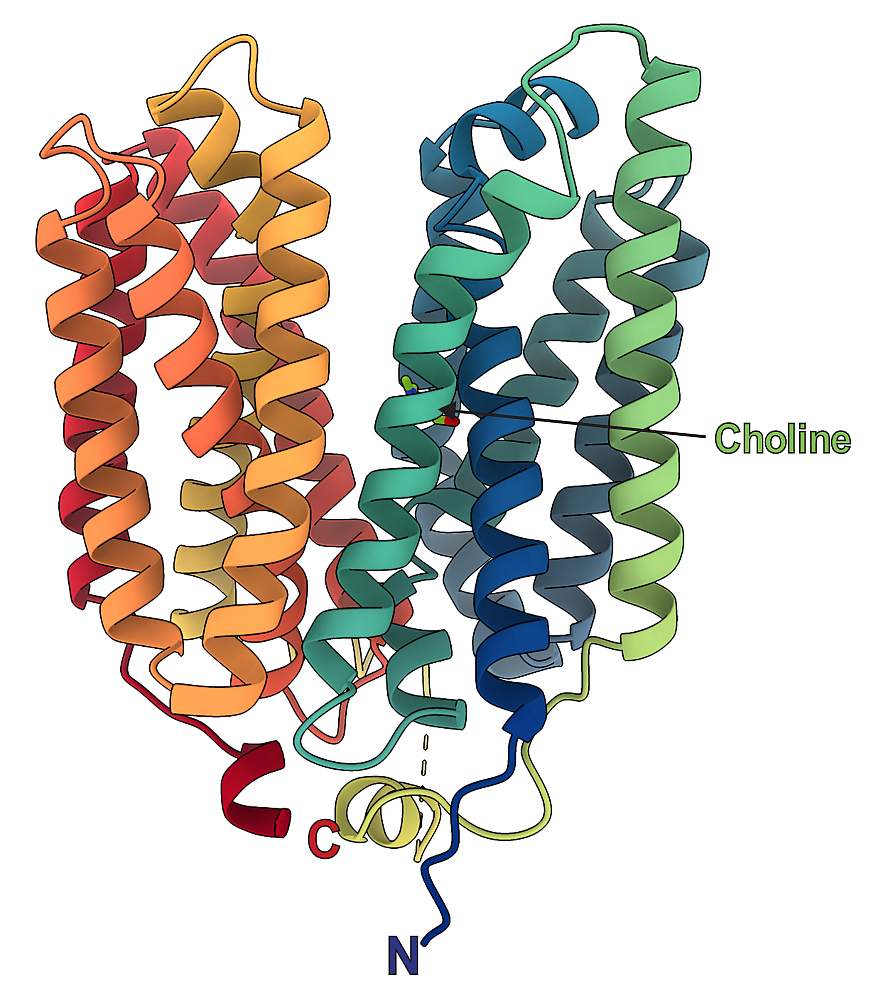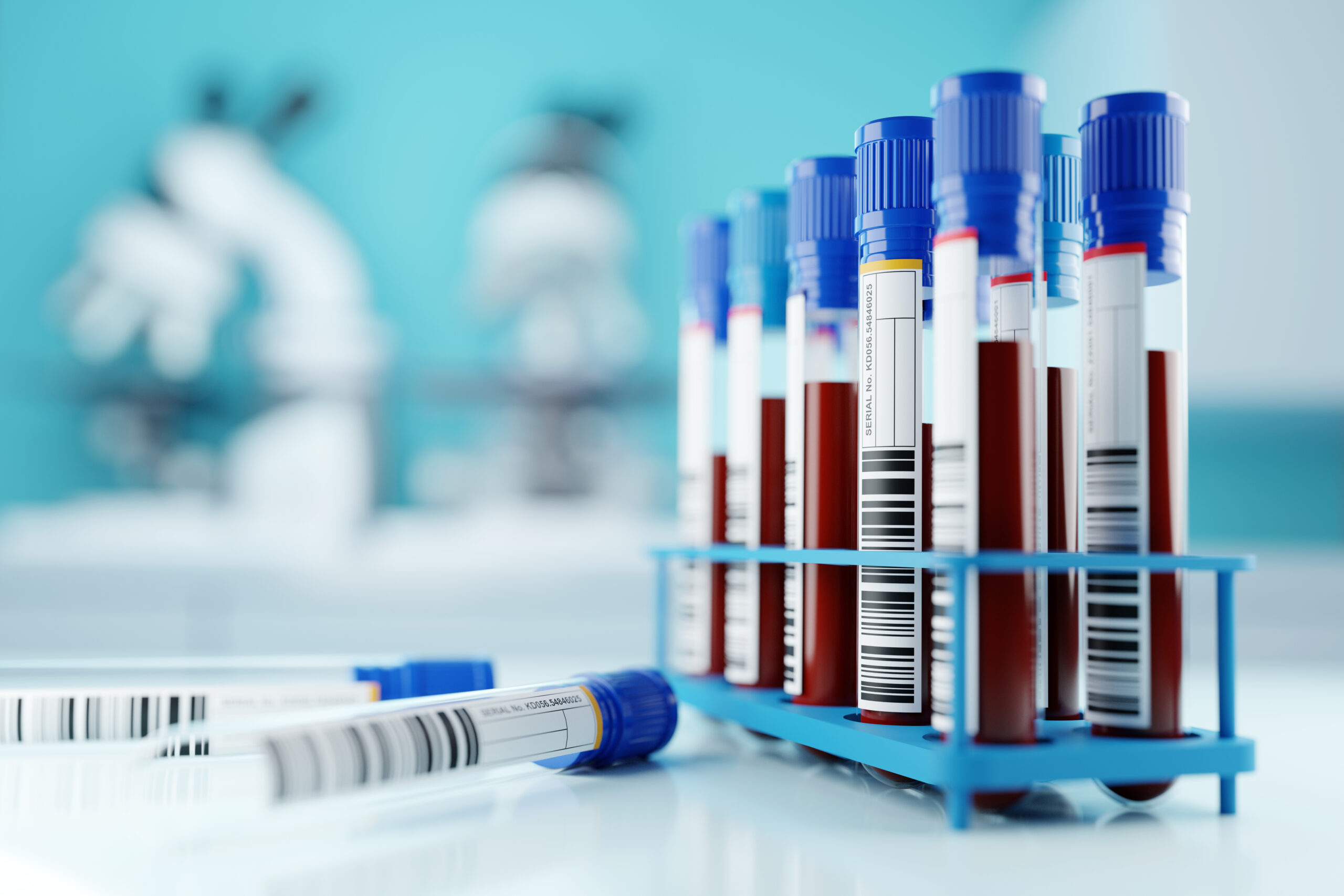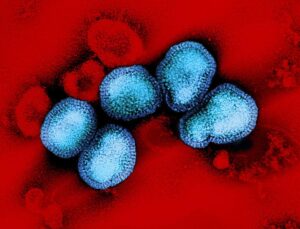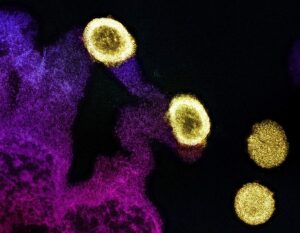Scientists discover how an essential nutrient enters the brain
NIH-funded study may inform the design of new therapies that cross the blood-brain barrier.

Structure of the transporter protein FLVCR2 with a choline molecule (center). Arnold lab, University of California San Francisco Image alt tag: Diagram of FLVCR2 protein structure.
What
Researchers have discovered that choline, an essential nutrient vital for brain health, is actively transported from the bloodstream into the brain by a protein. The findings may inform the development of new drugs that take advantage of this mechanism to treat brain disorders. The study, published in Nature, was funded by the National Institutes of Health (NIH).
Using brain tissue from mice and humans, researchers found that the protein, known as FLVCR2, was densely present in the blood-brain barrier, a tightly packed layer of cells that line the brain’s blood vessels. Specifically, FLVCR2 was embedded in endothelial cells, which are specialized cells that control the flow of nutrients and small molecules from the blood to the brain. Additional experiments showed that FLVCR2 selectively recognizes and shuttles choline into the brain.
The blood-brain barrier is a protective cell layer that shields the brain from toxins, microbes, and other harmful pathogens. The barrier also prevents many drugs that have the potential to treat neurological disorders from getting into the brain. Understanding how FLVCR2 interacts with choline and other molecules could help scientists develop drugs that mimic choline and use this molecular gateway to enter the brain.
To examine FLVCR2 at the atomic level, the researchers used a powerful technique known as cryo-electron microscopy to visualize the protein’s three-dimensional structure and see how choline molecules bind to pockets inside FLVCR2, similar to a lock-and-key mechanism. They used the 3D model to run computational simulations that showed how the protein adapts and changes shape to release choline into the brain.
Choline is critical for regulating mood and overall brain and nerve cell health. Choline is also involved in the production of acetylcholine, a neurotransmitter that plays a role in learning, memory, and muscle control.
Mutations in the gene that encodes FLVCR2 can cause proliferative vasculopathy and hydranencephaly-hydrocephaly syndrome, also known as Fowler syndrome, a rare inherited brain disorder, as well as other conditions associated with abnormalities in the brain’s blood vessels. Results of the current study may help scientists understand the biology underlying these diseases.
The study was funded by the National Institute of Neurological Diseases and Stroke (R21NS129105), the National Heart, Lung, and Blood Institute (K99HL166866), and the National Institute of General Medical Sciences (R35GM132120).
Who
Jill Morris, Ph.D., program director, NINDS, is available to discuss the study findings. To arrange an interview, please contact [email protected].
Article
Cater, R., et al. “Structural and molecular basis of choline uptake into the brain by FLVCR2.” Nature. May 1, 2024. DOI: 10.1038/s41586-024-07326-y.
NINDS is the nation’s leading funder of research on the brain and nervous system. The mission of NINDS is to seek fundamental knowledge about the brain and nervous system and to use that knowledge to reduce the burden of neurological disease.
About the National Institutes of Health (NIH):
NIH, the nation’s medical research agency, includes 27 Institutes and Centers and is a component of the U.S. Department of Health and Human Services. NIH is the primary federal agency conducting and supporting basic, clinical, and translational medical research, and is investigating the causes, treatments, and cures for both common and rare diseases. For more information about NIH and its programs, visit www.nih.gov.
NIH…Turning Discovery Into Health®













Post Comment